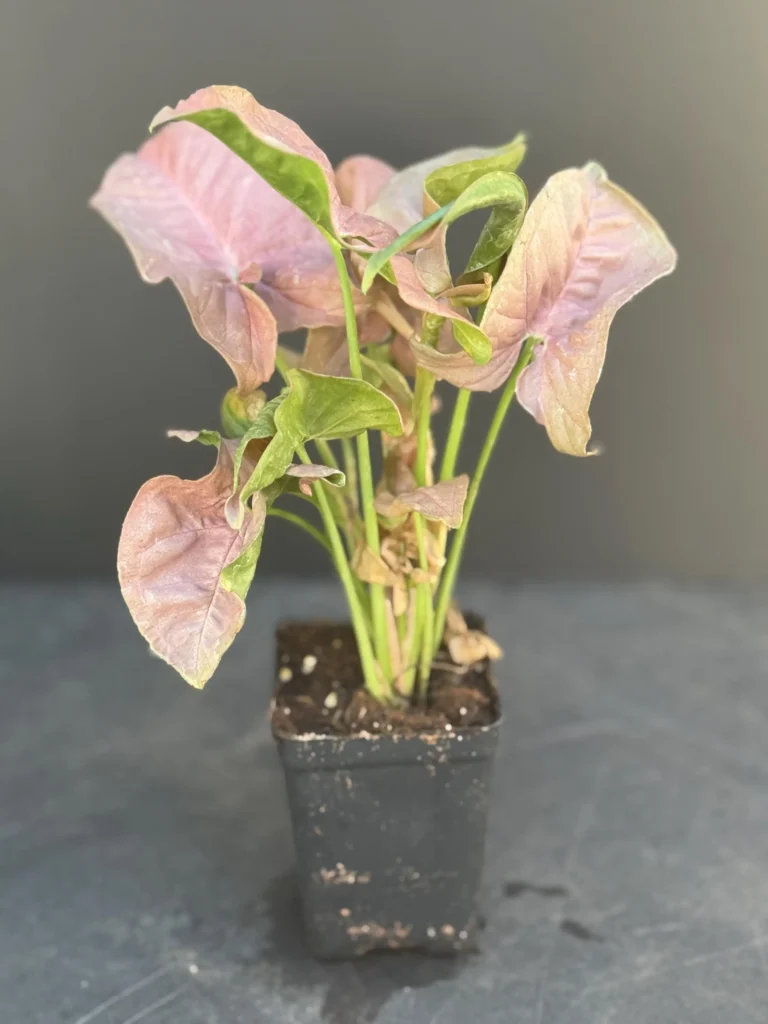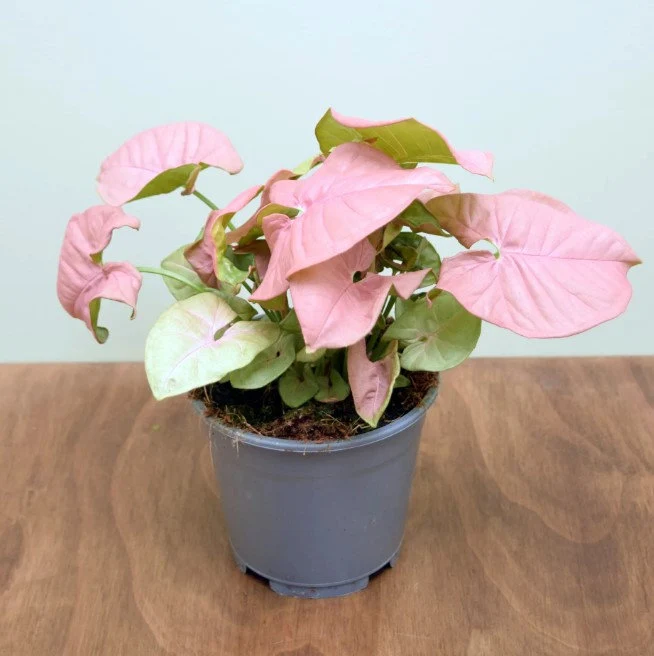
Neon Syngonium (Syngonium podophyllum ‘Neon’) is a striking, low-maintenance houseplant known for its vibrant pinkish-coral foliage. Also called the Arrowhead Plant, this tropical beauty thrives in a variety of indoor conditions and is ideal for beginners. Here’s a comprehensive guide to keeping your Neon Syngonium healthy and thriving.
1. Light Requirements
- Ideal Light: Prefers bright, indirect light for optimal color vibrancy.
- Low Light Tolerance: Can survive in low light but may lose its pink hue and become more green.
- Avoid Direct Sunlight: Harsh sunlight can scorch the leaves, leading to browning or fading.
2. Watering Needs
- Watering Frequency: Water when the top inch of soil feels dry, usually every 7-10 days.
- Avoid Overwatering: Soggy soil can cause root rot; ensure the pot has proper drainage.
- Humidity Considerations: Prefers moderate to high humidity. Increase humidity with misting, a pebble tray, or a humidifier.
3. Soil and Potting
- Best Soil: Well-draining, lightweight potting mix with peat moss or coco coir.
- Pot Choice: Use a container with drainage holes to prevent water retention.
4. Temperature and Humidity
- Ideal Temperature: 60-80°F (16-27°C). Protect from cold drafts and sudden temperature changes.
- Humidity Needs: Prefers humidity levels of 50% or higher. Dry air can cause leaf tips to brown.
5. Fertilizing
- Feeding Schedule: Fertilize monthly during the growing season (spring and summer).
- Type of Fertilizer: Use a balanced, diluted liquid houseplant fertilizer (e.g., 10-10-10 or 20-20-20).
- Winter Fertilizing: Reduce feeding in fall and winter when growth slows.
6. Pruning and Maintenance
- Regular Pruning: Trim leggy stems to maintain a bushy shape and remove yellowing leaves.
- Cleaning Leaves: Wipe leaves with a damp cloth to remove dust and improve photosynthesis.
- Propagation: Easily propagated via stem cuttings placed in water or soil.
7. Common Pests and Problems
- Pests: Watch for spider mites, aphids, and mealybugs. Treat infestations with neem oil or insecticidal soap.
- Leaf Browning: Can result from low humidity, overwatering, or too much direct sunlight.
- Leggy Growth: Increase light exposure and prune regularly to encourage compact growth.
8. Toxicity
- Toxic to Pets and Humans: Contains calcium oxalate crystals, which can cause irritation if ingested. Keep away from pets and children.
9. Repotting
- When to Repot: Every 1-2 years or when roots become root-bound.
- How to Repot: Choose a slightly larger pot, refresh the soil, and gently loosen the roots before transplanting.
Conclusion
Neon Syngonium is a stunning, easy-care plant that adds a pop of color to any indoor space. With proper light, watering, and humidity, it will thrive and grow beautifully. Whether kept as a bushy plant or trained to climb, it’s a fantastic addition to any houseplant collection.


